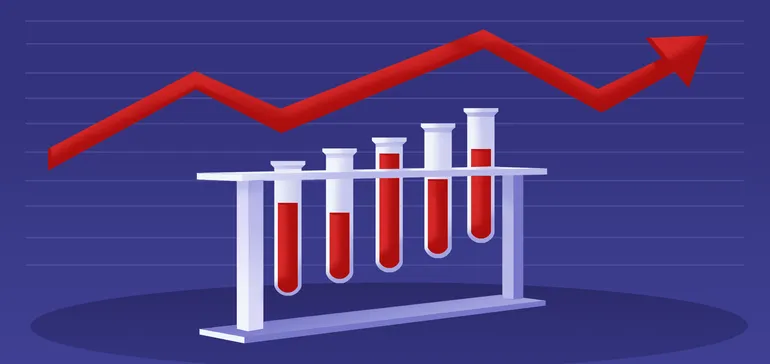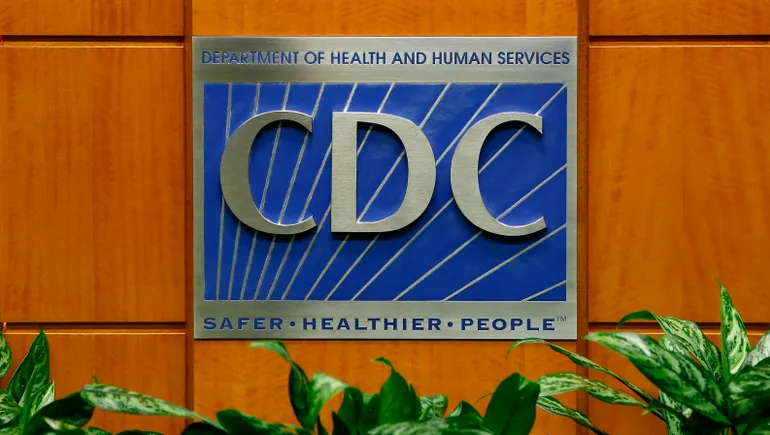Biotech startups are built on venture capital. Track funding rounds here.


Drug development is an expensive, risky endeavor. Biotechnology companies just starting out are many years away from seeing profits, if ever. So more often than not, a startup’s success turning science into medicines can come down to how much money it raises. That’s where venture capitalists step in, investing many millions of dollars for stakes in newly formed companies.
Young drugmakers rely on these private partners to survive until they can reach major milestones like entering clinical testing, or going public. And over the past two decades, they’ve had more and more help. The amount of money put into biotech has climbed considerably, resulting in the creation of hundreds of new companies.
Tracking that investment can reveal important patterns, showing how different drug types or diseases rise or fall out of favor with investors. BioPharma Dive built this database to help make that larger picture clear.
We’ve focused on a group of 23 venture capital firms that are highly active in creating new drug developers. In the database below, we’ve collected funding rounds involving those firms, a ledger of investment that we’ll update regularly.
If we’ve missed anything, or there’s additional information you’d like to see, please reach out and let us know.
Editor’s note: Search by biotech or investor name in the text box at top left. Filter by specific year, series or stage of investment, as well as sort by round size using the drop-down menus. Clicking any underlined term in the main database at right will filter by that term. Click the down arrow at far right to expand the information displayed for each round.
If the data do not display below, please try clearing your browser’s cache and reloading the page. If you still have issues, email BioPharma Dive editors for further troubleshooting.
Methodology and limitations:
For this database, BioPharma Dive compiled venture fundraising rounds for private biotechnology companies developing human medicines. We screened for rounds involving at least one of a group of 23 highly active venture capital firms involved in company creation.
This group was selected by comparing data from SVB, HSBC, William Blair and Bay Bridge Bio that identified the most active biotech venture capital firms in 2023 (SVB, HSBC, William Blair), 2022 (SVB), 2021 (SVB) and in 2018 to 2023 (Bay Bridge Bio). Investment activity in those lists was defined by the number of fundraising rounds in which each firm participated that year.
We then eliminated firms that were primarily a “crossover” investor, or were the venture arm of a pharmaceutical company. That yielded a list of 23 venture capital firms.
This core group of 23 firms is narrow by definition. But the activity of these firms provides a meaningful snapshot of investment trends in the industry. Over time, we plan to expand on this initial database by adding in more firms that meet our target focus.
This database is similarly limited by time. We focused on rounds that were completed and announced on or after Jan. 1, 2022. This captures a period of time in which the biotech sector experienced a downturn after a record high and the sector’s subsequent recovery. We also plan to add historical data from prior to Jan. 1, 2022 in later updates.
For each round identified, we collected information on the relevant company’s drugmaking modality and therapeutic area of focus, as well as the company’s stage of development and lead investors, if not one of the core group of 23 firms.
We generally used a company’s lead program to determine its modality, therapeutic area of focus and stage of development at the time of each round’s completion. The only exceptions to this are companies that inherited a late-stage candidate, but identified an earlier candidate as their priority and reason for raising funds. We categorized companies’ phase of development by the latest stage begun at the time of financing. So a company raising money to start a Phase 2 clinical trial that it hadn’t yet begun would be classified as in Phase 1.
The modalities listed are broadly defined and may not precisely describe an individual company’s experimental drug(s). They were chosen to better show overall trends in investment activity. “Drug discovery,” as a category, is meant to indicate those companies exploring new areas of science broadly, rather than focusing on a specific type of medicine.
Similarly, therapeutic areas cover a large number of diseases and, in some cases, such as with rare conditions, overlap with others. Common diseases that didn’t fit in the categories listed, such as those primarily affecting the heart, lungs, kidneys and endocrine system, were classified under “other.” When companies identified more than one therapeutic area with equal priority, we classified them as working on “multiple” therapeutic areas. Those that identified multiple areas, but prioritized one over others were classified under that priority area.
The nomenclature of venture capital rounds is fairly consistent, but some firms did not identify whether their round was seed or Series A, B, C, etc. In those cases, we classified the round as “undisclosed.” Extensions, expansions, or other add-on raises to an earlier Series round are noted, but not classified separately.
Nearly all rounds were announced in U.S. dollars. A handful were priced in euros or other foreign currencies, which we converted to dollars using exchange rate data from the relevant country’s central bank on the day the round was announced.
We organized rounds by the date they were announced, which in some cases is much later than when the round was actually raised if a company was initially operating in stealth. We did this for consistency, and to better match when a round’s existence was public knowledge.
BioPharma Dive will update this database as rounds that meet our screening criteria are announced, but there may be some delay in when new rounds are added.
This post has been syndicated from a third-party source. View the original article here.




